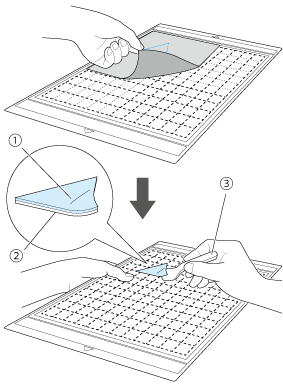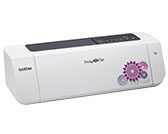DC200ULE
FAQs & Troubleshooting |
Cut the fabric other than quilt pieces. (How to use the Iron-On Fabric Appliqué Contact Sheet.)
Iron the specially designed contact sheet to the back of fabrics for any use other than quilt piecing, and then attach them to the standard mat.
The double-faced adhesive type of the iron-on fabric appliqué contact sheet reinforces the fabric and enables any pattern to be cut easily, including appliqués.
The sheet cannot be removed once it has been attached to the back of fabrics.
For quilt piecing, use the high tack adhesive fabric support sheet and avoid using the iron-on fabric appliqu contact sheet.
How to use the high tack adhesive fabric support sheet for details, see Cut a thin fabric for the quilt piece.
-
Peel off the protective sheet from the adhesive side of the standard mat.
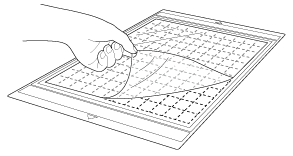
- Do not discard the protective sheet peeled off the mat; save it for later use.
- In order to maintain the adhesive strength, attach the protective sheet to the adhesive side of the mat after use.
- When the mat is not being used, clean the adhesive side and affix the protective sheet before storing it for details, see Cleaning the Mat.
-
Cut the iron-on fabric appliqué contact sheet to a size 2 cm (3/4 ") or more larger than the outline of the pattern to be cut.
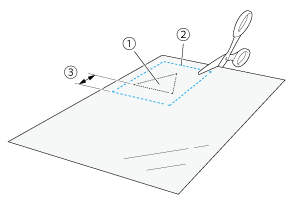
(1) Pattern to be cut
(2) Cutting line of sheet
(3) Margin of 2 cm (3/4 ") or more
-
With the glossy side of the contact sheet facing down, place it on the wrong side of the fabric.
Be sure to first iron the fabric to remove any wrinkles. Before placing the contact sheet on the fabric, make sure that the fabric has been allowed to cool after ironing.
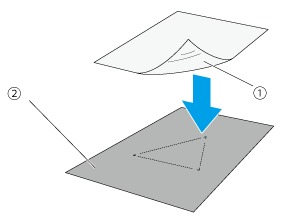
(1) Glossy side of contact sheet
(2) Wrong side of fabric
-
Evenly iron the entire contact sheet to affix it to the wrong side of the fabric.
With the iron on a medium temperature setting (140 to 160 °C (284 °F to 320 °F)), press each part of the sheet for about 20 seconds (the length of time differs depending on the material).
Be sure to apply pressure on the top of the backing and push out any air between the sheet and fabric.
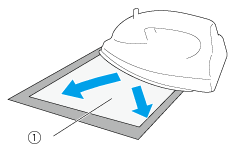
(1) Backing
- Before attaching the contact sheet to the fabric, use a piece of the sheet to test attaching it. If any problems occur when testing attaching, use different material.
- Leaving the iron in the same place for too long may scorch or melt the material.
-
Peel off the backing from the contact sheet.
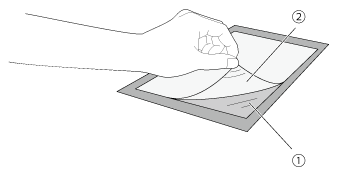
(1) Contact sheet
(2) BackingBefore peeling off the backing, allow all parts to cool.
-
With the side of the fabric that the contact sheet is attached to facing down, attach the material to the mat from its edges.
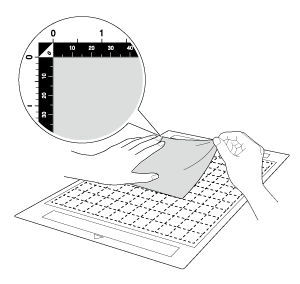
- Slowly attach the material from its edges so that no air is trapped between it and the mat.
- Place the material within the attaching area (grid area) on the adhesive side. If the material extends from the attaching area, it may be damaged by the feed rollers when the mat is fed.
- The mat does not have a top and bottom. It can be inserted into the feed slot from either end.
- Be sure that the vertical grain of the attached fabric runs straight up and down.
-
Firmly attach all of the material to the mat so that there are no wrinkles and no part can curl off.
Otherwise, curls in the material may become caught when the mat is inserted.
Peeling Off the Material
After cutting the material, use a spatula to peel off the fabric together with the attached contact sheet.
|
|
(2) Contact sheet |
Do not place anything heated on the fabric attached with a contact sheet. Adhesive will permeate any other pieces of fabric around.
Notice on Use of Iron-on Fabric Appliqué Contact Sheet
Store the contact sheet at room temperature and in a location not exposed to high temperatures, high humidity or direct sunlight.
